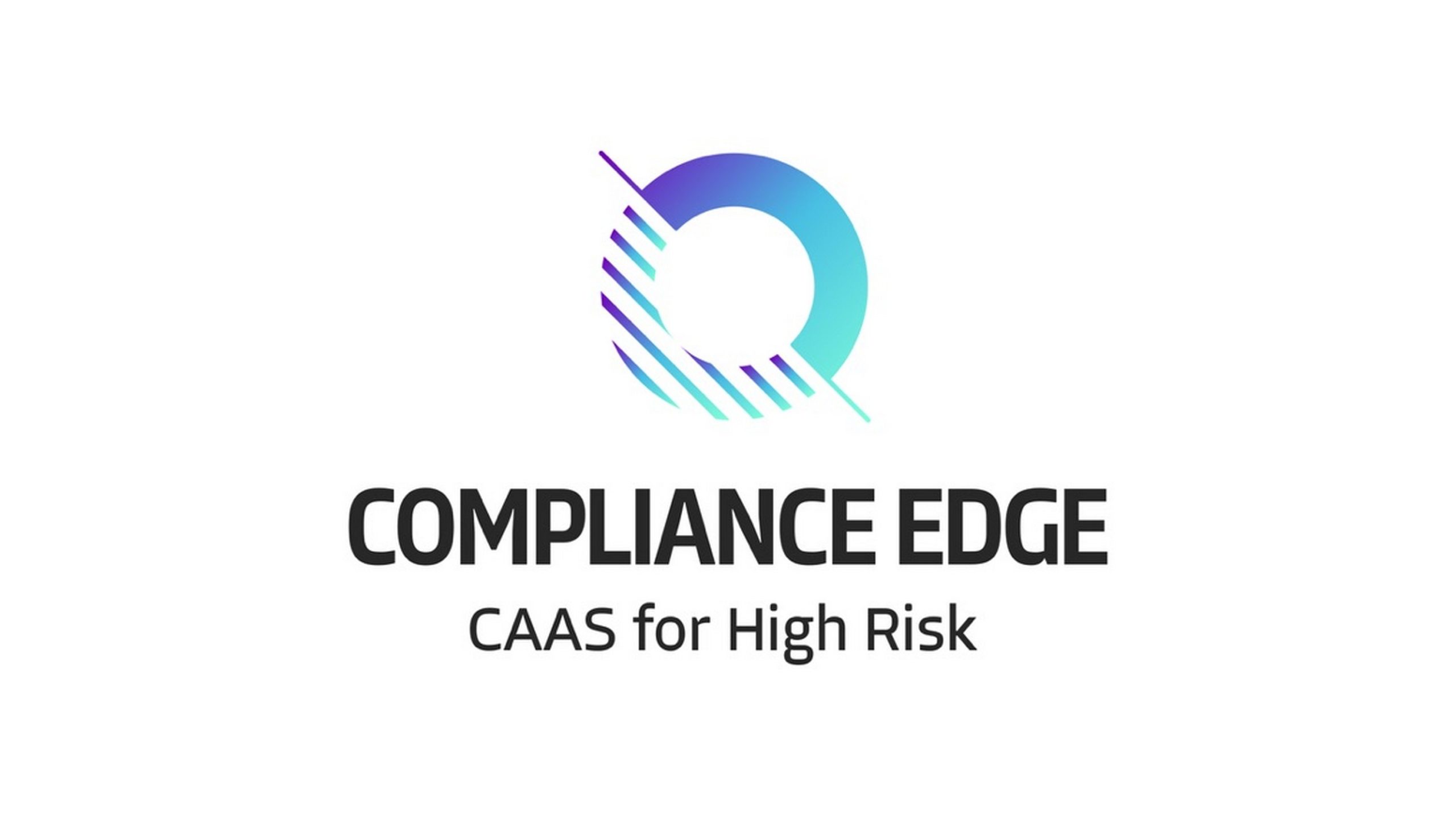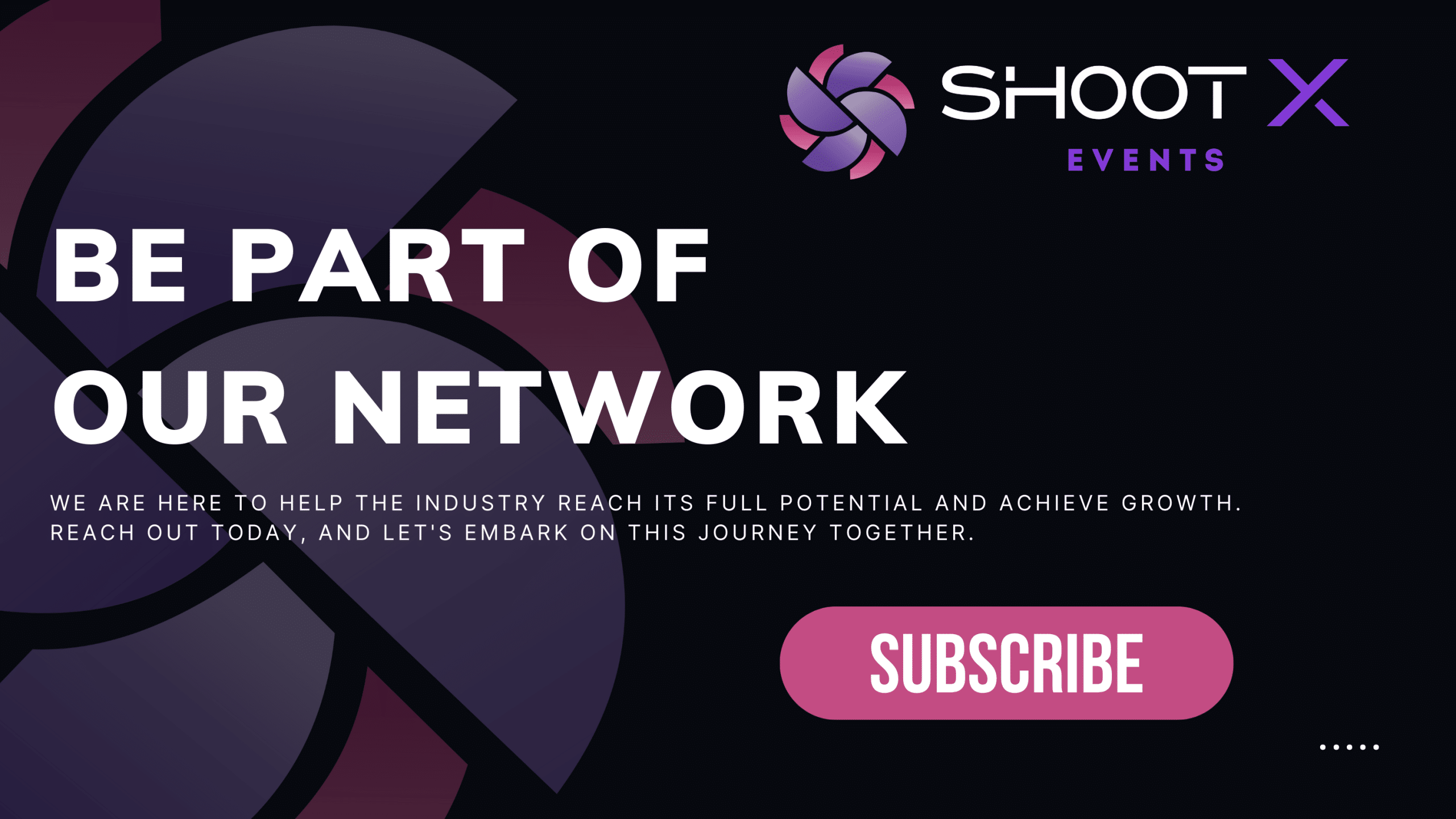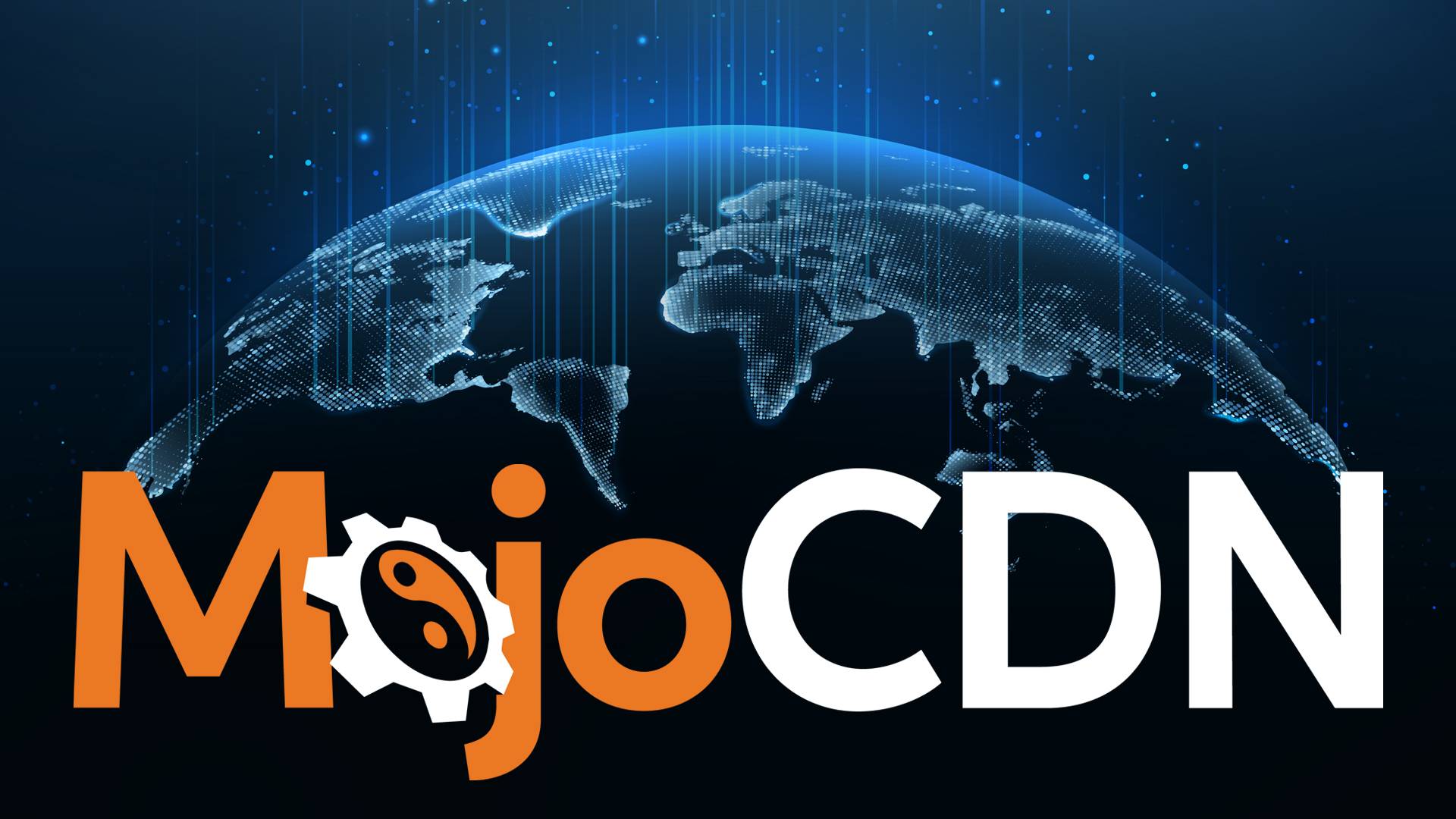Compliance-Edge Guide for Adult Merchants: Opening and Maintaining Payment (MID) and Bank Accounts
Adult industry merchants often face unique challenges when opening and maintaining payment accounts (MIDs) and bank accounts. With Compliance-Edge, businesses in the adult sector can structure a solid strategy to meet regulatory expectations and maintain stable relationships with banks and payment acquirers. Here’s a practical guide for navigating this process with a compliance-focused approach.
1. Preparing a Solid Compliance File with Compliance-Edge
The key to securing financial partners is a structured and transparent compliance file. Compliance-Edge can help you establish and document the following:
KYC and AML Compliance Policy: A good compliance strategy is built on rigorous KYC (Know Your Customer) and AML (Anti-Money Laundering) policies. Compliance-Edge assists in setting up clear procedures to demonstrate that your clients are legitimate and that transactions are monitored.
Service Description: It’s essential to present your products or services transparently. Compliance-Edge works with you to define a clear description of your activities, thereby reinforcing trust with your financial partners.
2. Identifying Aligned Banks and Acquirers with Compliance-Edge
One of the advantages of Compliance-Edge is its network of banks and payment acquirers specializing in high-risk sectors. This service helps you establish relationships with financial partners suited to your business.
Experienced Banks: Compliance-Edge connects you with banks that have experience working with adult merchants and understand the specific needs of the sector.
Specialized Payment Acquirers: Compliance-Edge partners with acquirers who can handle the compliance and transparency requirements specific to the adult industry, facilitating secure transaction processing.
3. Maintaining Compliance and Minimizing Risks
Once accounts are opened, Compliance-Edge continues to support your business by ensuring ongoing compliance and transparency, which are crucial for minimizing the risk of account termination.
Updating Compliance Policies: Compliance-Edge can conduct periodic audits to ensure your practices remain aligned with regulatory and legal updates.
Monitoring Compliance Processes: With Compliance-Edge, you can ensure that all AML and KYC procedures are consistently applied, strengthening the security and reliability of your compliance file.
Dispute Management and Fraud Prevention: Compliance-Edge provides support for managing payment disputes and enhancing anti-fraud processes, reducing risks for your business and preserving your relationship with acquirers.
4. Optimizing Communication and Transparency with Financial Partners
With Compliance-Edge, adult merchants can adopt a more transparent communication approach with their banks and acquirers, building trust and reducing the risk of account closure.
Proactive Transparency: Compliance-Edge helps structure clear communications with your financial partners, explaining the origin of transactions and providing necessary information about clients.
Organized Documentation: Compliance-Edge assists in organizing compliance documents and information on your practices, which facilitates exchanges with financial partners during audits or verification processes.
Conclusion
For adult merchants, Compliance-Edge offers a strategic solution to navigate the complex world of compliance and financial services. By adopting a proactive approach and reinforcing compliance practices, you increase your chances of securing and maintaining reliable payment and banking accounts.
Will Sex Workers Ever Be Treated Fairly and Without Discrimination?

Written by Mikayela Miller
Sex work has long been a contentious issue, fraught with stigma, discrimination, and legal challenges. For years, sex workers have faced societal marginalization, legal persecution, and violence, often without recourse or support. However, in recent years, there have been some advocacy efforts and policy changes that signal a positive shift toward recognizing the rights and dignity of sex workers. While the road to full equality is still long, these developments offer hope for a future where sex workers are treated fairly and without discrimination.
One of the most significant positive developments in recent years is the move toward decriminalization of sex work in various parts of the world. Decriminalization is widely seen by advocates as a crucial step in reducing the harms faced by sex workers and improving their rights and safety.
New Zealand has been a pioneer in this area, with the passing of the Prostitution Reform Act in 2003. This law decriminalized sex work, allowing for better working conditions, access to health services, and legal protections against exploitation and violence. The New Zealand model is often cited as a successful example of how decriminalization can lead to better outcomes for sex workers.
Then, in the United States, there was the FOSTA (Allow States and Victims to Fight Online Sex Trafficking Act) and SESTA (Stop Enabling Sex Traffickers Act). These were U.S. Senate and House bills which became law on April 11, 2018.
Mike Stabile is the Director of Public Policy at the Free Speech Coalition, a nonprofit, non-partisan trade association for the adult industry with the mission is to protect the rights and freedoms of the adult industry. He explained, “Following the passage of FOSTA-SESTA in 2018, an even moreso after the boom of new adult content creators during the pandemic, we’ve seen greater and more mainstream awareness of sex work and sex workers than ever before. There is more and more recognition that sex work is a form of labor, and that sex workers need to be part of conversation, and that they need their own protections — even legislators and policy makers are becoming aware of this. Many people were more comfortable when sex work was not out in the open. And now that it IS out in the open, we’re seeing a backlash. But this shows that people are taking it seriously instead of just discounting it as they may have done before. As the sex industry gains acceptance, and fights to move into spaces that it was previously cut off from, as it gets vocal about the discrimination by mainstream banking systems and payment platforms, I think sex worker issues are becoming more understood by the general public. There may always be stigma, but when it comes to access to housing, banking, and employment, there is growing acceptance that sex workers should have rights. So, while there’s a backlash, we shouldn’t mistake that backlash for long-term strength. The strength is on our side, and there is still much work to be done.”
In the United States, some cities and states are beginning to reconsider their approaches to sex work. In 2020, the District of Columbia introduced the “Community Safety and Health
Amendment Act,” which proposed decriminalizing sex work in the city. Although the bill did not pass, it represented a significant step forward in the conversation about sex work in the U.S. Additionally, in 2021, Oregon passed a law that vacates past convictions for prostitution, a move that helps sex workers avoid the long-term consequences of criminal records.
Canada has also seen progress with the introduction of Bill C-36 in 2014, which, while controversial, acknowledged the need to protect the rights of sex workers and reduce harm. Some advocates argue for further reforms to ensure the law fully supports sex workers’ rights without pushing them further into the margins.

Savannah Sly is a sex worker, advocate, board member for Woodhull Freedom Foundation, an organization with the mission to affirm sexual freedom as a fundamental human right, and the Founder & Co-Director of New Moon Network, and organization that provides capacity building support to sex worker and survivor-led organizations in the U.S. She agreed with Stabile’s comments, stating, “The phrase “sex work” has made it’s way into the public vernacular, which is significant because it shapes all conversations about the adult industry with a labor framework. By establishing sex work as work, activists globally are better able to advocate for their human and labor rights.”
Sly also shared, “In most parts of the world, sex work is criminalized and stigmatized. It can be very challenging for sex workers to access support when they need it. For this reason, it’s of critical importance that sex workers maintain relationships with their colleagues and build community. Isolation is one of the most dangerous hazards compromising sex worker safety, and being in touch with other sex workers can help us protect our mental health and physical safety. Additionally, understanding the laws in your region can help you as a sex worker understand what types of public services may or may not be available.”
The recognition of sex work as legitimate labor and the call for sex workers’ rights to be protected as human rights have gained traction in the international community. The United Nations and the World Health Organization have both advocated for the decriminalization of sex work as a means to protect public health and human rights. These endorsements lend significant weight to the movement and help shift public perception toward viewing sex work as legitimate work that deserves the same protections as any other occupation.

Leya Tanit is the Founder, CEO and Fundraising Community Chair for Pineapple Support, a free support and therapy service for all persons working in the online adult industry. She stated, “The mental health effects of trafficking and abuse are profound and should not be overlooked. These experiences can lead to severe health issues, including depression, anxiety, PTSD, and other
long-term emotional impacts. The stigma surrounding sex work further exacerbates these problems, often leading to isolation and making it difficult for performers to find therapists who are both industry-aware and sex-positive.”
Sex workers can begin with understanding their legal rights, which is crucial. In places where sex work is decriminalized, workers have the right to work in safe conditions, to refuse clients, and to seek legal recourse if they are mistreated. Even in places where sex work remains criminalized, sex workers still have rights related to personal safety, protection from violence, and access to health services.

Ruby Lynne is a sex worker, a Medical Advisory Board Member for PASS, a non-profit organization dedicated to the health and safety of adult industry workers, and the founder and host of The Granny Panty Podcast, a platform highlighting mature creators in the adult industry. She elaborated, “Familiarize yourself with the laws in your area regarding sex work and know your rights. In places where sex work is decriminalized or legalized, there may be specific legal protections in place. Even in areas where it remains criminalized, you still have basic human rights that must be respected.”
Additionally, if you experience discrimination, harassment, or violence, document the incident as thoroughly as possible. Record dates, times, locations, and any other relevant details. If safe to do so, take photos or videos as evidence. This documentation can be crucial if you decide to take legal action or seek support from advocacy organizations.
Lynne added that, “Keep records is essential. Document all interactions with clients, including communications, payments, and any incidents where you feel mistreated. This documentation can be critical if you need to take legal action or report the behavior. This goes for online platforms as well! Report any abuse and keep screenshots and records.”
Another option that is helpful is to seek out therapists who specialize in counseling sex workers to help navigate this industry and the challenges it presents, which is exactly what Tanit and Pineapple Support advocate for. Tanit said, “Having a strong support network is crucial. Surrounding yourself with understanding and supportive individuals can make a significant difference in coping with these challenges. However, professional support is also essential. Seeking out a therapist who understands the unique pressures and circumstances of the adult industry can provide invaluable help in navigating the emotional aftermath of abuse and trafficking. Within our industry, there are specialized attorneys and organizations who focus on the needs of adult industry workers and have experience with sex worker abuse and trafficking cases. These professionals can guide you through legal processes, including the importance of filing a police report and documenting evidence. Taking these steps can help protect your rights and support your case, should you choose to pursue legal action. You are not alone. Reaching out for support, whether from friends, professionals, or legal experts, is brave and a vital step in the healing process.”
, sex workers often still face discrimination and unfair treatment. If you are a sex worker and feel you are being treated unfairly, it’s important to know that you have rights and that there are organizations ready to support you.
The fight for sex workers’ rights has gained momentum thanks to the tireless efforts of advocacy organizations around the world. These groups work to protect sex workers from violence, discrimination, and legal persecution, while also providing resources and support.
Aside from the organizations already mentioned in this article (the Free Speech Coalition, the Woodhull Freedom Foundation, New Moon Network, Pineapple Support, and PASS), here are some others that provide resources for sex workers:
The Global Network of Sex Work Projects (NSWP)
International organization that advocates for the rights of sex workers and promotes evidence-based approaches to policy and legal reforms.
The Sex Workers Outreach Project (SWOP-USA)
A national grassroots organization in the U.S. that advocates for the rights of sex workers and provides support services, including harm reduction resources, legal assistance, and crisis intervention.
Red Umbrella Fund
A global fund dedicated to supporting sex worker-led organizations and initiatives. They can help connect you with local groups that offer support.
Decrminalize Sex Work
Advocacy organization that works to improve policies in all areas of sex work.
BIPOC Collective
Community-based advocacy and resources, including mutual aid, for sex workers of color.
Adult Performance Artist Guild (APAG)
Organizes and advocates for adult online workers/performers
Strippers United
Advocacy and organizing for dancers
SW Mutual Aid Collective (SWAID)
Fund created by sex workers to quickly, efficiently and privately give out financial aid, contraceptives, harm reduction supplies and other materials to the community
The journey toward fair treatment and the elimination of discrimination against sex workers is ongoing, but the progress made in recent years is encouraging. With continued advocacy, legal reforms, and international support, there is hope that sex workers will one day enjoy the same rights and protections as workers in any other industry. By staying informed, advocating for your rights, and seeking support when needed, you can contribute to this important movement and protect yourself from unfair treatment.
Mikayela Miller is a creator, writer, and advocate in the adult entertainment industry. You can follow her on X at @Mikayela_Miller
Creator or Cam Model – Which One is Best for You?
The roles of creators and cam models
A creator, often referred to as a content creator, is responsible for producing various forms of media, particularly in the digital landscape. This role encompasses a wide range of responsibilities, including writing articles, creating videos, and developing engaging social media posts. The primary goal of a creator is to entertain or educate their audience through compelling content that resonates with viewers. By focusing on their unique interests and honing their skills, creators can carve out a niche for themselves in the digital world. This diversity in content allows creators to explore their creativity while providing valuable information or entertainment to their audience.
In contrast, a cam model specializes in live streaming performances that often include erotic acts and personal interactions with viewers. The primary responsibility of a cam model is to engage and entertain an audience through a live webcam broadcast. This interaction can involve various activities, such as talking, dancing, and performing sexual acts, all while maintaining a connection with viewers. Unlike traditional content creators, cam models often operate in a more personal and interactive environment, allowing them to build relationships with their audience in real time. This unique aspect of cam modeling requires not only performance skills but also the ability to manage viewer expectations and maintain a safe online environment.
Understanding the key differences between creators and cam models can help individuals determine which role aligns best with their interests and goals. While both roles involve content creation, their focus and audience engagement methods differ significantly. Creators typically produce pre-recorded content designed for broader consumption across various platforms, whereas cam models offer real-time performances tailored to individual viewer interactions. Additionally, the nature of the content varies: creators usually emphasize informative or entertaining material, while cam models focus on adult entertainment. By considering these distinctions, individuals can make informed decisions about which path to pursue based on their comfort level, creativity, and desired audience interaction.
Factors to consider when choosing between creator and cam model
When deciding between becoming a creator or a cam model, personal skills and comfort levels play a crucial role. Each path demands a unique set of abilities that can significantly influence your success and enjoyment in the chosen field. For instance, cam modeling often requires strong communication skills, multitasking, and the ability to engage with an audience in real-time. Conversely, content creation may involve skills such as video editing, graphic design, and storytelling, which cater to a different audience interaction style. Therefore, assessing your own strengths and comfort zones can guide you towards the path that aligns best with your capabilities and personal preferences.
Another important consideration is your target audience and the type of content you wish to produce. Understanding your audience’s preferences, demographics, and behaviors can directly impact your content strategy and engagement success. For cam models, this might mean tailoring live streams to specific interests or preferences, while creators might focus on producing videos, blogs, or social media posts that resonate with their target demographic. By identifying the type of content that excites your audience, you can effectively engage them and create a loyal following, ultimately driving your success in either field.
Income potential and monetization strategies are also key factors when choosing between being a creator and a cam model. Creators often have various ways to monetize their content, such as through ads, subscriptions, or affiliate marketing. In contrast, cam models can diversify their income by utilizing multiple platforms and revenue streams, ensuring financial stability during slower periods. Understanding how to effectively monetize your efforts is essential for long-term success, so it’s important to analyze the income potential of both paths and determine which aligns with your financial goals and lifestyle aspirations.
Pros and cons of being a creator versus a cam model
One of the primary advantages of being a creator is the flexibility it offers in terms of work pace and environment. Creators have the freedom to work from home, allowing them to create content on their own terms and schedules. This autonomy can lead to greater job satisfaction and a sense of validation when customers purchase their products or services. Furthermore, creators can monetize their work through various channels, including sponsorships and affiliate marketing, which can significantly enhance their income potential. The ability to engage in creative expression while building a personal brand is also a major draw for many, as they can connect with audiences and cultivate a loyal following.
On the other hand, being a cam model comes with its own set of unique advantages that can be appealing to many individuals. This role offers an opportunity for high income potential, with some cam models reportedly earning three to five figures a month. The freedom to be your own boss is another enticing aspect, enabling models to set their own hours and work from the comfort of their homes. Cam modeling can also be relatively easy to start, with minimal barriers to entry compared to other business models. However, it is crucial to recognize that this field requires a certain level of emotional resilience and the ability to navigate online interactions, which can sometimes be challenging.
Despite the benefits associated with both roles, there are challenges and drawbacks that must be considered. For creators, one significant challenge is the potential for inconsistent income, as revenue can fluctuate based on audience engagement and market trends. Additionally, creators may face issues related to timewasters or problematic interactions while trying to build their brand. In contrast, cam models must contend with the risk of having their content leaked online, which can lead to privacy violations and personal safety concerns. Furthermore, the competitive nature of both industries means that standing out can require considerable effort and dedication, making it essential for individuals to weigh these factors carefully when choosing between the two paths.
Written by Mikayela Miller
Mikayela Miller is a creator, writer, and advocate in the adult entertainment industry. You can follow her on X at @Mikayela_Miller
Onlyfans Announce the Average Earnings Per Creator Were $1.3k for the Year 2023 – How Realistic is This Figure?
Overview of OnlyFans and its Monetization Model
OnlyFans operates primarily on a subscription-based model, which allows creators to earn money through monthly subscriptions from their fans. Subscribers pay a fee to access exclusive content, which can range from photos and videos to personalized messages. This model empowers creators to set their own subscription prices, typically ranging from $4.99 to $49.99 per month, allowing them to tailor their revenue potential based on the value they provide and the demand from their audience. The subscription-based approach not only fosters a direct connection between creators and their fans but also encourages creators to consistently produce high-quality content to maintain and grow their subscriber base.
In addition to the subscription fees, creators on OnlyFans can capitalize on several additional revenue streams, enhancing their overall earnings potential. Some of these streams include: – Pay-per-view (PPV) content: Creators can charge subscribers for specific posts or videos, offering exclusive content that goes beyond the standard subscription. – Tips: Fans can send monetary tips to creators as a way to show appreciation for their content. – Merchandise sales: Some creators leverage their platform to sell branded merchandise, further diversifying their income sources. These additional revenue options provide creators with multiple avenues to monetize their content and engage with their audience, which can significantly impact their overall earnings on the platform.
Several factors can influence the earnings of creators on OnlyFans, making the average earnings figure of $1.3k for 2023 somewhat subjective. Key factors include the creator’s niche, the size of their audience, and their engagement strategies. For instance, creators in popular niches, such as fitness or adult entertainment, may attract larger audiences compared to those in less saturated markets. Additionally, regular interaction with subscribers through messages and tailored content can foster loyalty, potentially resulting in higher earnings. Furthermore, the creator’s marketing efforts, including social media promotion and collaborations with other creators, can also play a crucial role in driving traffic to their OnlyFans page and increasing their earnings.
Analysis of the $1.3k Average Earnings Figure
To understand the average earnings figure of $1.3k per creator on OnlyFans, it is essential to examine the distribution of earnings among its creators. The platform hosts a vast range of content creators, from those who generate minimal income to those who earn substantial amounts. This discrepancy can skew the average, as a small percentage of top earners can significantly raise the mean income. For instance, many creators report earnings ranging from $1.5k to $2k per month, especially those who dedicate considerable time and effort to their content. Consequently, while the average suggests a relatively moderate income, it may not accurately reflect the experiences of the majority who earn significantly more or less. Therefore, a deeper dive into the earnings distribution is necessary to provide a clearer picture of the platform’s financial landscape.
When comparing the average earnings on OnlyFans with other content creation platforms, the context becomes even more crucial. Platforms such as Patreon, Twitch, and YouTube offer different monetization models and audience engagement strategies, which can lead to varying income levels for creators. For example, Twitch streamers often rely on subscriptions and donations, while YouTube creators monetize through ad revenue and sponsorships. These platforms may boast higher average earnings, but they also come with their unique challenges, such as algorithm changes and competition for viewer attention. Analyzing the average earnings across these platforms can help contextualize OnlyFans’ $1.3k figure, suggesting that while it may seem modest, it aligns with the experiences of creators on similar platforms.
Several variables can significantly affect individual earnings on OnlyFans, making the $1.3k average figure less representative for many creators. Key factors include the type of content produced, audience engagement, marketing strategies, and the time invested in content creation. For example, creators who focus on niche markets or those who actively promote their profiles on social media often see higher earnings due to increased subscriber counts. Additionally, fluctuations in subscription prices, tips, and pay-per-view content can lead to varying income levels among creators. As such, understanding these variables is essential for accurately interpreting the average earnings figure and recognizing the diverse realities faced by individual creators on the platform.
Realistic Expectations for New and Existing Creators
To maximize earnings on OnlyFans, creators must adopt effective strategies that align with their goals and the platform’s dynamics. One of the most crucial strategies is consistent content creation; regular updates keep subscribers engaged and encourage them to remain subscribed. Additionally, leveraging social media for promotion can significantly increase visibility and attract new subscribers. Creators should consider offering exclusive content or personalized services, which can entice fans to pay higher subscription fees or tips. Furthermore, engaging with followers through direct messages and responding to comments can create a sense of community, making subscribers feel valued and more likely to continue their support. These strategies not only enhance earnings but also build a loyal fanbase that can sustain long-term success.
Despite the potential for high earnings, creators on OnlyFans face various challenges in achieving their financial goals. One significant hurdle is the saturated market; with countless creators vying for attention, standing out becomes increasingly difficult. Additionally, many creators may struggle with time management, especially if they are balancing OnlyFans with full-time jobs or other commitments. This limited availability can hinder their ability to produce content consistently and engage with subscribers effectively. Moreover, creators may encounter issues with platform policies, which can restrict certain types of content or limit earning potential. These challenges can lead to frustration and may cause some creators to abandon their efforts before reaching their desired earnings.
The role of niche markets and audience engagement cannot be overstated when it comes to earning potential on OnlyFans. Creators who identify and cater to specific niches often find it easier to attract dedicated followers who are willing to pay for exclusive content. For example, niches such as fitness, cooking, or specific fandoms can create passionate communities that support their creators wholeheartedly. Moreover, effective audience engagement is key; creators who actively interact with their subscribers and take feedback into account are more likely to foster loyalty. This engagement not only helps in retaining subscribers but also encourages word-of-mouth promotion, which can lead to increased visibility and higher earnings. By focusing on niche markets and enhancing audience relationships, creators can significantly improve their chances of achieving or surpassing the average earnings reported for 2023.
Is Social Media Dead for Adult Workers?
The current state of social media usage among adult workers
Statistics reveal a complex picture of social media engagement among adult workers. In recent years, the percentage of internet users aged 25 to 64 who do not engage with any social media platforms has remained relatively low, with only 6.8 percent reporting no usage in Q2 2022. This indicates that while some adult workers are disengaging, a considerable number still find value in these platforms. Furthermore, surveys show that 54% of adult workers acknowledge that taking social media breaks can help them recharge during their workday. This suggests that social media still has a place in the workplace, as it can provide opportunities for relaxation and connection, even amidst concerns about its overall impact on work engagement.
Popular social media platforms exhibit varying trends in usage among adult workers. For instance, about half of U.S. adults report using Instagram, while smaller percentages engage with platforms like TikTok, LinkedIn, Twitter (X), and BeReal. Each platform serves different professional and personal needs, which influences how adult workers interact with them. Despite some platforms facing criticism for their negative impacts, such as exposure to harmful content, they continue to be utilized for networking, sharing ideas, and fostering community among colleagues. This dynamic highlights the ongoing relevance of social media in the lives of adult workers, even as specific platforms may experience declines in popularity or engagement.
When comparing social media usage patterns between adult workers and younger generations, notable differences emerge. Younger adults, particularly those under 30, tend to be the most active users of social media platforms, favoring quick interactions and online communication over face-to-face conversations. This shift in communication preferences can have implications for workplace dynamics, as it may lead to reduced socioemotional connections among team members[6]. In contrast, adult workers may utilize social media more for professional networking and information sharing rather than personal engagement, showcasing a divergence in how different generations leverage these platforms. This generational gap in usage patterns raises questions about the future role of social media in professional environments, particularly as younger workers enter the workforce with distinct habits and preferences.
Factors contributing to the perception of social media being “dead”
One of the primary factors contributing to the perception that social media is “dead” for adult workers is the phenomenon of burnout and overexposure. Research indicates that excessive use of social media at work can lead to distractions, negatively affecting job performance and causing significant burnout among employees. As professionals are inundated with constant notifications and updates, the line between personal and professional life blurs, leading to feelings of exhaustion and disengagement. This burnout is exacerbated by social comparison, where individuals measure their worth against the curated lives of others, further diminishing their motivation to engage with social media platforms. Consequently, many workers are beginning to withdraw from these platforms, viewing them as sources of stress rather than tools for connection and collaboration.
In addition to burnout, changing professional networking preferences are reshaping how adult workers perceive social media. Traditional social media platforms have historically facilitated networking and professional relationships; however, there is a noticeable shift towards more specialized and professional social networks, such as LinkedIn. These platforms provide tailored environments that cater specifically to job hunting, networking, and professional development. As workers increasingly prioritize meaningful connections over casual interactions, they may view general social media as less relevant to their career goals. This transition reflects a growing desire for more targeted and professional communication tools that better align with their networking needs.
Moreover, the shift to alternative communication tools is contributing to the belief that social media is losing relevance among adult workers. With the proliferation of platforms designed for direct and efficient communication—such as Slack, Microsoft Teams, and Zoom—many professionals are opting for these alternatives to engage with colleagues and clients. These tools offer a streamlined approach to collaboration, minimizing the distractions often associated with traditional social media platforms. As a result, workers are gravitating towards these more focused environments for their professional interactions, further solidifying the perception that social media is becoming obsolete in the workplace. The evolution of communication methods may signal a significant transition in how adult workers connect, potentially leaving traditional social media behind.
The relevance of social media for professional growth
Social media continues to provide essential networking opportunities and industry connections for adult workers, despite concerns about its relevance. Platforms such as LinkedIn, Twitter, and even Facebook allow professionals to connect with colleagues, industry leaders, and potential employers. These connections can lead to collaborative projects, job offers, and valuable mentorship relationships. In fact, many professionals have successfully leveraged social media to expand their networks, gain insights from industry discussions, and even discover job openings that are not advertised publicly. The ability to follow and engage with professional organizations on these platforms also enables users to stay updated on industry news and trends, which is crucial for career development.
In addition to networking, social media serves as a powerful tool for sharing knowledge and resources within professional communities. According to a study conducted by McKinsey, 72% of employees believe that social tools can enhance knowledge sharing in their organizations. This sharing occurs through various means, such as posting articles, engaging in discussions, and participating in webinars. Social media allows professionals to disseminate valuable insights and learn from others, fostering an environment of continuous learning and collaboration. By connecting with experts and thought leaders in their fields, adult workers can expand their understanding and access resources that can improve their skills and performance.
Furthermore, building a personal brand and online presence through social media is increasingly important for professional growth. A well-defined personal brand not only amplifies an individual’s online presence but also makes their content more impactful and memorable. Professionals can showcase their expertise, share their achievements, and express their values, which can lead to greater recognition within their industries. While social media is just one aspect of personal branding, it provides a platform to communicate one’s professional identity authentically. By curating content and engaging thoughtfully with others, individuals can enhance their reputations and create lasting impressions in the minds of potential employers and collaborators.
How to Choose the Right Kind of Payment Solution for Your Adult Business
The specific needs of your adult business
Identifying the appropriate payment types and frequencies is crucial for adult businesses, as it directly impacts cash flow and customer satisfaction. Businesses must consider the various payment methods available, including credit cards, debit cards, digital wallets, and bank transfers. Each option carries its own advantages and limitations regarding transaction times, fees, and ease of use. For instance, credit and debit cards are commonly accepted and convenient for customers, while bank transfers may offer lower fees for larger transactions. Additionally, understanding the payment frequency—whether customers are making one-time purchases or subscribing to ongoing services—will guide the selection of the most suitable payment solutions. This consideration ensures that the chosen payment methods align with both the business model and customer expectations.
Assessing customer demographics and preferences is a vital step in tailoring payment solutions for an adult business. Different customer segments may have varying preferences for payment methods based on factors such as age, location, and technology usage. For example, younger consumers may lean towards digital wallets and mobile payments, while older demographics might prefer traditional credit and debit cards. By conducting market research and gathering data on customer habits, businesses can gain insights into which payment methods are favored. This understanding not only enhances the customer experience by providing preferred options but also increases the likelihood of successful transactions, ultimately fostering customer loyalty and retention.
Evaluating security and compliance requirements is essential for adult businesses, given the sensitivity of customer payment information. Payment security measures must be robust to protect against fraud and unauthorized access. This involves conducting a thorough risk assessment to identify potential vulnerabilities in the payment processing system. In addition, businesses should ensure that their payment solutions comply with industry standards, such as the Payment Card Industry Data Security Standard (PCI DSS) and local regulations[8]. By prioritizing security and compliance, adult businesses can build trust with their customers, knowing that their financial data is safeguarded, which is particularly important in the adult industry where privacy concerns are paramount.
Comparing different payment solution options
When selecting a payment solution for an adult business, it is essential to compare traditional payment processors with alternative solutions. Traditional methods, such as cash and checks, may seem straightforward, but they often lack the efficiency and security of digital options. On the other hand, alternative solutions like credit cards, online payment gateways, and digital wallets provide greater convenience and accessibility for customers. However, businesses must assess their specific needs to determine which type of payment solution aligns best with their operations. Factors such as target market preferences and the nature of transactions can significantly influence this choice. Therefore, understanding the strengths and weaknesses of each option is crucial for making an informed decision.
Evaluating fees and transaction costs is another critical factor when comparing payment solutions. Different providers have varying fee structures, which can significantly impact an adult business’s bottom line. For instance, traditional payment processors might charge flat fees per transaction, while alternative solutions may have percentage-based fees that fluctuate with the transaction amount. It is essential to analyze these costs in the context of expected transaction volumes and customer behavior. A careful examination of fees can help businesses avoid unexpected expenses that could hinder profitability. Furthermore, transparency in fee structures allows business owners to budget effectively and choose a payment solution that provides the best value for their specific needs.
User experience and integration factors play a vital role in the effectiveness of a payment solution. A seamless user experience can enhance customer satisfaction and lead to increased sales, making it crucial to select a payment gateway that prioritizes ease of use. Businesses should also consider how well the payment solution integrates with their existing systems, such as e-commerce platforms or accounting software. This integration is essential for streamlining operations and reducing manual errors. Additionally, evaluating the speed of transaction processing and any holding periods for funds can significantly impact cash flow, particularly in adult businesses where prompt payment access is often necessary. By focusing on these aspects, business owners can choose a payment solution that not only meets their operational needs but also provides a smooth and efficient experience for their customers.






















